
Six bird monitoring projects need your support
December 4, 2023 | alena.klvanova
The European Bird Census Council has set up a Small Grant Fund (SGF) to support national bird monitoring activities, particularly in Europe’s low- and middle-income countries. In 2023, we received ten applications for small grants from ten countries, and the EBCC Board has selected six projects as priorities for support. The projects come from six countries and request nearly 60,000 euros in total. As the EBCC’s resources are insufficient to fund all projects selected for support, we kindly ask individuals or organisations to donate and help us support the projects.
Here, we describe the projects selected for the support (order doesn’t reflect scores received by each project in the evaluation by the EBCC Board):
Bulgaria
Project title: Support for Common Bird Monitoring (CBM) and Breeding Bird Atlas in Bulgaria
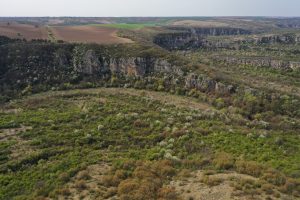
The landscape in Bulgaria is diverse and rich in biodiversity. Photo by BSPB
The project’s goals are to ensure the continuation of the CBM scheme in Bulgaria during the expected gap year and to improve coverage of the Second National Breeding Bird Atlas.
The Bulgarian CBM monitoring scheme has been running since 2005. Volunteers collect field data. Coordination and data processing have been funded by various sources over the years. However, periods when funding was not available led to fewer participants. In 2020-2023, the scheme was funded by a state fund managed by the Bulgarian Ministry of Environment and Water. BSPB will apply for continuation funding, but due to the complicated political situation, there is no guarantee that funding will be available for 2024. EBCC Small Grant will be used to ensure the financing of coordination in the potential gap year.
Furthermore, BSPB and partners are working on Bulgaria’s Second breeding bird atlas. Data are collected mainly by volunteers using the SmartBirds database and app. Atlas methodology is based on two main methods: 1. Timely survey of species abundance in randomly selected 1x1km squares in every 10×10 atlas square; 2—surveys of rare, nocturnal and colonial species. There is no specific funding for the Atlas work, so very few squares are covered by paid researchers. Hence, the number of squares where timely surveys are done is negligible. The same is valid for the general species distribution of mountainous regions and areas far from big towns. There are still many squares where the distribution of common species is established, but more data on cryptic species is needed. EBCC Small Grant will cover expenses for atlas surveys in at least 20 squares where data are insufficient, focusing on cryptic species and timely surveys. BSPB will seek additional funding from the government and other sources to support the atlas work.
Stoycho Stoychev, a project coordinator, comments: “The second breeding bird atlas in Bulgaria would reveal bird distribution and numbers change in one of the bird richest parts of Europe. It will enable us to compare two periods of significant social and political changes, namely before and after Bulgaria’s accession into the European Union, and to plan evidence-based conservation measures.”
Contact: Stoycho Stoychev, stoycho.stoychev@bspb.org
Cyprus
Project title: Breeding bird monitoring ‘across the divide’ in Cyprus, to cover the ‘northern’ part of the island and complete island-wide coverage. This will include localised Calandra Lark & Audouin’s Gull surveys in cooperation with KUŞKOR, the Turkish Cypriot Bird Protection Society.

Counting Audouin’s gulls at the far NE tip of Cyprus. Photo by BirdLife Cyprus
Sadly, Cyprus is divided in two, and the project’s goal is to fill gaps in ongoing systematic field monitoring by covering work north of the dividing line, where existing funding will not cover personnel expenses or operational costs.
This monitoring will complement ongoing data gathering and assessment work being carried out under the Cyprus government contract by BirdLife Cyprus for reporting under ‘Article 12’ of the EU Birds Directive. The programme will also pave the way for establishing longer-term island-wide monitoring in cooperation with KUŞKOR.
Volunteer survey teams from the Turkish Cypriot (‘northern’ Cyprus) and Greek Cypriot (‘southern’ Cyprus) communities will conduct surveys with support from BirdLife Cyprus and KUŞKOR staff. The monitoring will follow the methodologies used under already established BirdLife Cyprus programmes. It will focus on crucial breeding species such as Coracias garrulus and, in particular, on species primarily wholly restricted to ‘northern’ Cyprus, namely Melanocorypha calandra, Corvus corax, Falco subbuteo, Larus audouinii and Gulosus aristotelis.
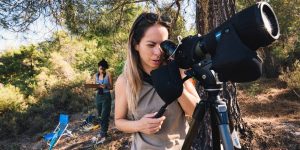
The new monitoring effort would ensure island-wide coverage. Photo by BirdLife Cyprus
“This funding would allow us to build cooperation with Turkish Cypriot colleagues and to plug some serious gaps in island-wide bird population coverage,” said Martin Hellicar, Director of BirdLife Cyprus.
Contact: Martin Hellicar, martin.hellicar@birdlfiecyprus.org.cy
North Macedonia
Project title: Building MES’s capacities for bird research and bird citizen-science
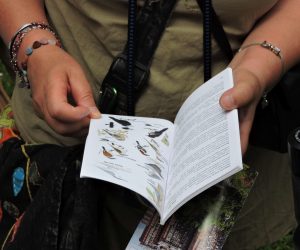
An original bird guide could increase the number of volunteers in North Macedonia. Photo by MES
The goal of the project is to upgrade and update a learning tool (printed bird guide) in order to increase the number of skilled ornithologists and bird citizen-science volunteers in the Macedonian Ecological Society (MES).
MES has a strong bird research history for its size but has always had a lack of manpower and tools to improve the skills of its members and volunteers interested in birds. In the framework of the Common Birds Monitoring Scheme implemented by MES in the period 2007-2011, a bird guide pocketbook was produced in a limited number of copies. As the enthusiasm about bird monitoring and birding as a citizen-science activity increased (with a group of enthusiast bird photographers), so has the interest and demand for such a field guide. Currently, MES is involved in the LIFE EuroBirdPortal 2 project and continues to collect data for developing the first-ever Macedonian Breeding Bird Atlas. Thus, the demand for a learning tool such as a bird guide has increased. The photographers have a stock of photos from at least 70% of the species that occur in the country, which is enough to use to upgrade and reprint a new bird guide.
North Macedonia is a country rich in biodiversity, and the same is true for the birds that live, visit, or pass by it. Even though it’s a small and land-locked country, its geographic position and climatic circumstances make N. Macedonia home to the southern-most or northern-most distribution ranges of birds from three different biomes: Mediterranean, Alpine and Continental. With more bird photographers out in the Macedonian wilderness, we discover how many more bird species frequently occur in the country than we had previously known. I believe that training even more “eyes on the field” with the help of the revamped field bird guide will bring back even more data on birds occurring in the country, be they rare or common.
Contact: Danka Uzunova, uzunova@mes.org.mk
Romania
Project title: Improving the short- and medium-term data quality delivered by the Romanian Common Bird Monitoring scheme
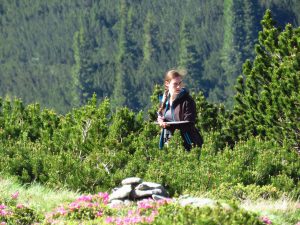
Monitoring in Carpathians… Photo by SOR
The project aims to improve the quality of the yearly monitoring data by the Romanian Common Bird Monitoring scheme by increasing the number of plots and the coverage of the national territory. The Romanian Ornithological Society (SOR) considers the programme a priority, providing funding from internal resources during the years with no financing (“gap years”).
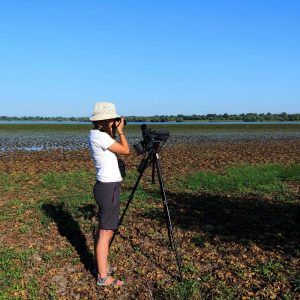
… and monitoring in the Danube Delta. Photo by SOR
During the last few years, we registered an unwanted decrease in the number of plots covered by volunteers. Besides such a low number, there is also a problem with uneven coverage; a large part of the country has not covered any monitoring squares in the last few years. We plan to address these issues by planning on short-term and medium-term in two ways. First, we will try to cover 2024 with at least 40 plots in the area with missing data (plots have already been covered at least three times in the past when funding was available). Second, we will engage as many skilled volunteers as possible by direct-to-person meetings. This activity will target mainly the volunteers who dropped from the programme recently and other known experienced observers who are most likely to become new volunteers.
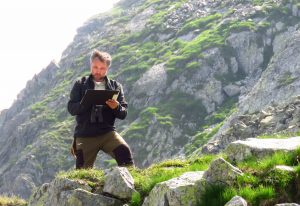
Romanian Bird Monitoring in the field. Photo by SOR.
‘’Romania has one of the richest biodiversity in Europe; still, when it comes to common birds, we observed the same decline worrying our Western and Central European colleagues. Common Bird Monitoring is crucial to keep track of this process and understand its causes. Funding it at a national scale is difficult and, for the large areas with no volunteer support, it is the only way to collect the data we need,’’ says Cristi Domsa, the coordinator.
Contact: Cristi Domsa, cristi.domsa@sor.ro
Serbia
Project title: National Atlas of Serbia – support for making the National Breeding Bird Atlas of Serbia and organizing the first census of the Red-footed Falcon (Falco vespertinus) in Serbia
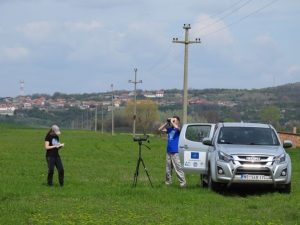
Bord Monitoring in Serbia. Photo by Ptice Srbije
The project aims to complete a database for the National Breeding Bird Atlas of Serbia. We plan to map all Red-footed Falcon colonies and solitary pairs in Serbia and train more than 50 field workers in quality field surveys. We will complete census data for Rook and Red-footed Falcon colonies endangered in the Pannonian plain. The number of Rook colonies in northern Serbia is numbering at least 200. During the whole time of the project, we will work with field workers and volunteers and train them to collect quality data about bird distribution from the field through various applications, tools, and programs.
‘’During the EBBA2 project, we have started dual work on the first National breeding bird atlas and so far tens of thousands of data have been collected during various other projects and programmes. This project will help us to collect data in under-surveyed regions of the country as well as to obtain data for one of the seriously endangered species from our Red Book of Serbia.’’ Marko Šćiban, the coordinator, says.
Contact: Marko Šćiban, marko.sciban@pticesrbije.rs
Slovenia
Project title: Developing the Forest Bird Index in Slovenia: methodological and policy issues
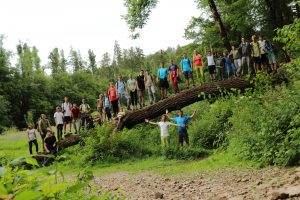
Volunteers are crucial for the sustainable monitoring schemes – picture from the youth ornithological camp in Slovenia. Photo by DOPSS
The project’s objectives are to resolve the methodological issues related to the FOBI, gain national resources for the continuation of the long-term forest census by adding the FOBI to the FBI as a national environment-quality indicator, and provide better data for the PECBMS. Most of Slovenia is covered by forests. Consequently, forest birds are the most common ones. DOPPS-BirdLife Slovenia aims to carry out long-term monitoring to provide FOBI (common forest bird index) and use the results among other environmental quality indicators at the national and EU level, including PECBMS. Some questions arose about the appropriateness of the analytical methodology needed to provide a true FOBI. And the question of large-scale monitoring sustainability over time. A small EBCC grant will be used to find these answers by conducting different but comparable analyses to see which analytical method gives the best results. Extensive advocacy work will also be undertaken, with lobbying and policy work to gain some (permanent) national resources to continue FOBI in the long term.
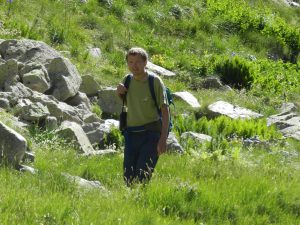
Primož Kmecl, the project coordinator, monitoring birds in Slovenia. Photo by DOPSS
‘’Slovenia is the third most forested country in Europe. Yet we don’t have a fully established common bird monitoring scheme in forests. We must resolve methodological issues and ensure stable funding.’’ Primož Kmecl, the project coordinator, says.
Contact: Primož Kmecl, primoz.kmecl@dopps.si
Every Euro counts
From previous experience in the EBCC projects, we know that even a tiny contribution to the development of bird monitoring can deliver excellent results. Therefore, we kindly ask anybody to help develop and maintain European bird monitoring by contributing to the Small Grant Fund. We would appreciate donations of any amount sent to the EBCC account (see below).
We will inform the donors and broader audience about the projects via the EBCC Newsletter and website. Donors who want to receive personalised information, please provide your e-mail to the EBCC Officer Petr Voříšek, vorisek@ebcc.info.
Thank you!
EBCC Bank Account
Name of account holder: EBCC treasurer
Address bank: ING Bank NV POB 1800 1102 BW Amsterdam Netherlands
IBAN (International Bank Account Number): NL62INGB0004235670
BIC (SWIFT-code): INGBNL2A
EBCC is an association under Dutch law.